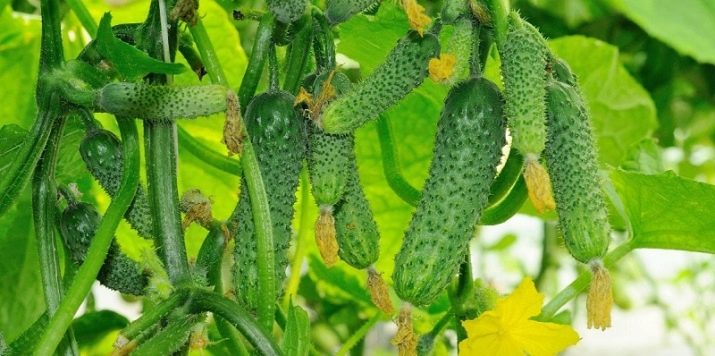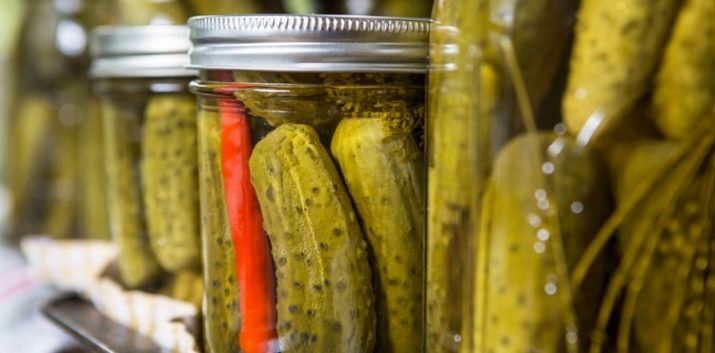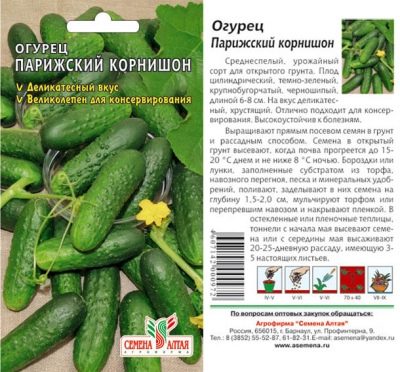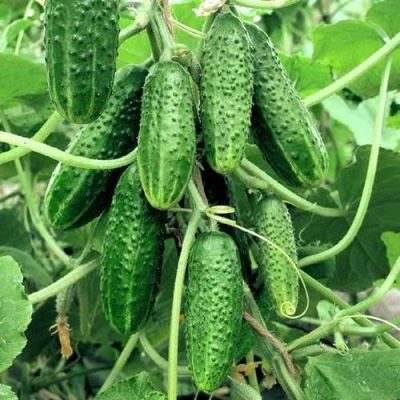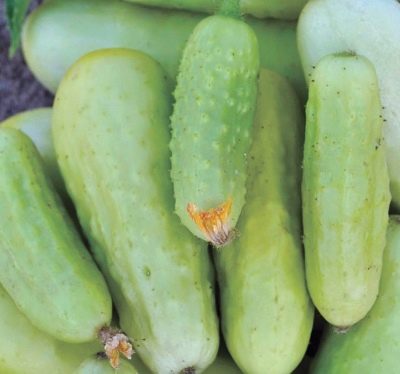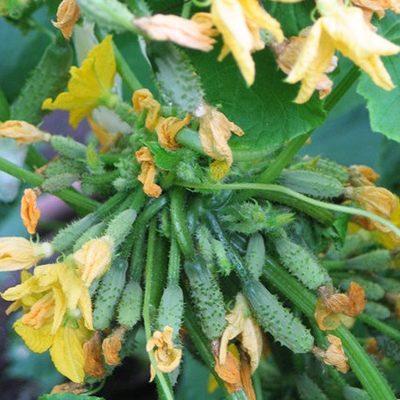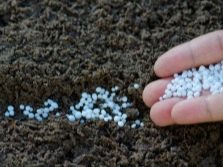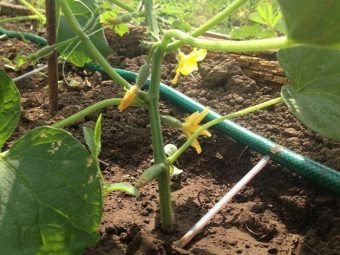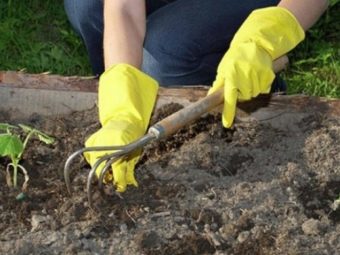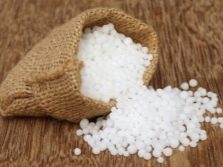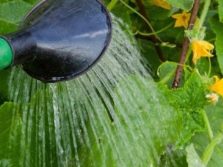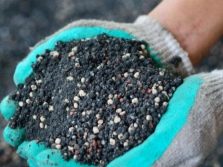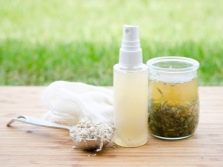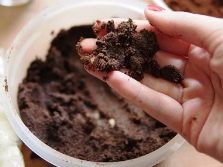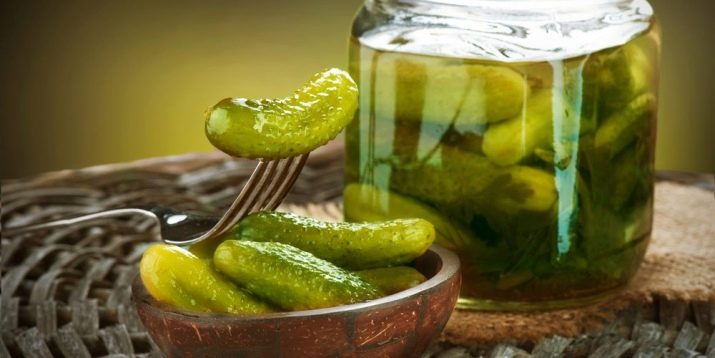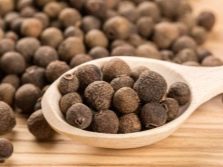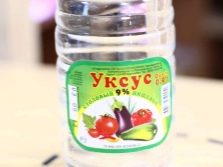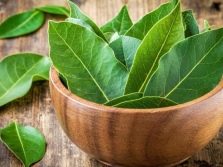Gherkins: variety of varieties, cultivation and use

There are products that can decorate any holiday table, for example, canned ramson, olives and, of course, gherkins.The latter can be bought on the market or in the store. But it’s not so difficult to grow and stock tasty, crunchy mini cucumbers on your own. This will allow you not to overpay, as well as enjoy delicious organic vegetables from the garden. Consider the features of gherkins in more detail.
What it is?
Gherkin is a group of cucumber varieties that are distinguished by their small size fruits. This type of cucumber was bred by breeding in the 19th century in France. For its removal it took more than 300 years of hard work of breeders, but the efforts were worth it, because such products are much safer than genetically modified.
At first, the cucumbers were called “cornish”, but in the early twentieth century in France began the fashion for melodious names. So the "cornish" was transformed into the familiar "gherkin".
The fruits of this gherkin are not derived from cucumbers, but from the plants of pumpkin crops, so they are referred to as false berries. The size of a quality gherkin should be no more than eight centimeters. Known varieties of mini-gherkins, the fruits of which reach no more than six centimeters. Often in the production of fruits are used in size less than four centimeters. Such cucumbers are considered immature, but for gherkins this is permissible.
Sometimes in relation to canned gherkins can hear the term "piculi". This French word is really applicable to gherkins, as well as to any other preservation, since in France “pictoule” is the word for canned snacks.
Among producers of canned products there are unscrupulous firms that give out ordinary cucumbers for gherkins, which have not grown to normal size. Therefore, choosing the gherkins in the store, it is important to make sure that this type of culture is in the bank. As for the ordinary immature cucumbers, they will not bring any benefit. To distinguish ordinary fruits from gherkins, you need to pay attention to the cost of the product. These gherkins can not be cheap, because their cultivation and production requires a greater amount of labor.
Varieties
Among gardeners there is an opinion that it is almost impossible to grow gherkins in the Russian climate, and the seeds sold on the markets are suitable only for greenhouses. Due to selection, this error is only partly true. Previously, gherkins really poorly tolerated planting in the soil, but today there are several ideal options for open ground.
"Moravian F1"
The fruits of this variety are distinguished by a rounded shape. They are more full-bodied than other popular varieties. In this case, the fruits have all the qualities of thin gherkins: they are elastic, crunchy, juicy, the flesh is not too grainy, it does not taste bitter. Cucumbers of this variety are great for both blanks for the winter, and for the preparation of salads and sauces. In addition, the fruits of this variety are beautiful, smooth form, and therefore are considered the best for sales.
Mature fruit varieties reach 9 centimeters, weighing no more than 90 grams. The average crop ripening period is 40-45 days from the time of planting. The Moravian F1 variety is suitable for planting in greenhouses and in open ground. The variety is resistant to the most common diseases of cucumbers and melons, tolerates weak frosts and drought.
"Parisian"
Perhaps this is the most popular variety. He has good reviews from both experienced gardeners and beginners. The variety is easy to maintain and brings a high yield. Fruits are perfectly stored in the refrigerator or cellar, they are well tolerated in transportation, and are well suited for blanks.
The fruit plant grows with a medium-high branchy bush. Fruits ripen on the 40-45 day from the date of planting, so the variety is considered early ripening or super-ripening. It is recommended for planting near apiaries - in such conditions, the yield increases several times. Bushes of this variety need timely pinching (breaking off extra branches), otherwise the plant's juices are distributed incorrectly, and the yield decreases.
Fruits grow dense, elastic, with a bright green color. The size of such a cucumber does not exceed 6 centimeters, and its weight is not more than 80 grams. Marinated fruits of this variety retain their elasticity, delicious crunch, bright color.
Variety "Paris" has a high resistance to diseases of garden plants and fungi, he is not afraid of drought. However, do not forget about the benefits of greenhouse cultivation: in such conditions, gherkins are less exposed to viruses, temperature drops and other adverse factors.
"Friendly family"
Experienced gardeners have long identified the best varieties of gherkins for growing in the greenhouse. One of them is the high-yielding medium-early variety “Friendly family”. The variety has this name, because the fruits grow in "little families" - clusters. The peculiarity of this variety is also in the fact that 4-5 fruits can be found on the central branch of the bush, and up to 10 fruits can be found on the side branches, therefore, bushes of this variety are in urgent need of tying up the branches. In addition, it is important to pinch the plants in time and be sure to stepon them, so that the juices do not go into the shoots.
The speed of ripening fruit is 45 days from the date of planting. The fruits of this variety are thin, like a spindle needle. In addition, they are quite small (size is 4-5 centimeters, weight - not more than 50 grams). Cucumbers are great for canning. Such products give the impression of expensive and high-quality store cans.
"Sweet crunch"
Fruits of the Sweet Crunch variety differ from traditional gherkins in an original color. These cucumbers are owners of a light green, almost white color. On the surface of the peel there are pimples, spikes of dark green color. The fruits are even and rounded, have an excellent presentation. They are excellent for fresh consumption and for preservation. The weight of a mature fruit is no more than 70 grams, and the size is no more than 4-6 centimeters.
Bushes of this variety suffer from direct sunlight, so they are only suitable for growing in greenhouse conditions, where the sunlight is refracted and scattered. In addition, you should not get involved in too frequent watering - the trunks of the bushes in this class are very gentle, therefore, prone to decay.
It is advisable to feed the plants before flowering - this will significantly increase their yield.
"Everyone is the envy of F1"
Another interesting way to grow gherkins is in room conditions. For this suitable bushy varieties. It is possible to collect several harvests per season from one such bush, but under the conditions of an apartment it is unlikely that it will be possible to grow enough cucumbers for harvesting. This variety is used both for home cultivation and for planting in open ground, as it is resistant to cold snap and is highly immune to garden crop diseases. Bushes do not need a lot of sunlight. In addition, the variety is characterized by cyclic fruiting. In conditions of open ground, fruiting continues until the onset of frost, and under room conditions this process can be stretched for several years.
It is worth considering that in the autumn-winter period, the bushes need additional feeding. The frequency of watering, on the contrary, it is desirable to reduce to 1-2 times a week. Fruits of a grade "To everyone on envy" perfectly are suitable for conservation. In the process of growth, they reach 10-12 centimeters and masses up to 100 grams. The flesh of the fruit is very juicy, the skin is elastic, with a bright color. After pickling, the cucumbers remain crispy. They perfectly absorb the aromas of spices, so do not be too zealous with spices.
The disadvantages of this variety include the high cost of seedlings and seeds.The variety “Everyone for envy” is bred in a hybrid way, and all hybrids are known to have a high price.
How to plant?
Planting gherkins in open ground and in the greenhouse must begin with the preparation of the earth. The quality and quantity of the crop depends on the soil condition. High-quality soil must contain a high percentage of peat and be richly fed with humus. In order to prepare the site for planting a crop, you need to act according to a certain scheme.
- In the autumn period, immediately after the harvest, you must carefully dig up the desired piece of land. The depth of digging should be at least 20 centimeters. The dug up soil should be fine and loose, it is important to carefully break all the lumps of earth.
- All residues of roots and grass should be removed from the soil.
- The prepared soil should be carefully watered with a 7% solution of potassium permanganate and ensure access of air masses (in the greenhouse) so that the ground is dry and ventilated.
- A month later, the soil needs to be fed. To do this, pour 2 kg of potassium sulfate, 0.5 kg of nitrate and 4.5 kg of superphosphate onto it (per cubic meter). Then you need to slightly loosen the soil with a rake. By spring, this soil will become the highest quality and suitable for sprouting cucumbers, gherkins and other fruit crops.
The processes of sowing seeds in the greenhouse and in the open ground include different nuances, since the seeds for greenhouses and for the soil differ in terms of resistance to temperature changes. With the planting of seeds in open ground should not arise special difficulties. First you need to harden the seeds well. Two weeks before disembarking, they should be wrapped in a gauze pocket, moistened with plenty of water and put in a refrigerator. During this time, the seeds swell, are saturated with water, hardened. After that, they need to lay out in a warm place and dry.
The hole should not be too deep, not more than 1.5 cm. The earth must be watered with warm water. Then you should put the seeds, sprinkle them with earth and slightly compacted. The process of planting in open ground is completed.
For planting crops in a greenhouse it is better to use boxes with a good drainage system. In such circumstances, grow the most healthy bushes that do not need a dive. Seeds need to be planted on the same principle as when planting in open ground. Drawers must be covered with a thick transparent, colorless film. This will create a greenhouse effect.
In such conditions, almost no additional watering is needed, and the seeds germinate much faster. At this stage, the temperature in the greenhouse should not fall below 26 degrees. After the seedlings emerge, it must be reduced to 17 degrees during the day and 10 degrees at night, but not less than 5 degrees. Such a decrease in temperature will harden the seeds.
Care
Growing gherkins is easy, you just need to know a few important secrets. The first thing to take care of is regular and proper watering. Water gherkins need to be quite often, because their root system with rare watering cracks, expires juices and rot. However, too frequent watering is dangerous for plants. In hot weather, you need to water the bushes once a day.
It is better to do this in the evening - the moisture will not evaporate too intensively and will not damage the leaves. Water should be warmed to room temperature. In cool time, you can reduce the frequency of watering to 1 time in 2-3 days.
It is important that the ground remain loose after moistening. To do this, you need to organize drip irrigation from a hose or through a watering can with a spray. When watering should avoid contact with water on the leaves of plants. The land in the field of irrigation should be periodically loosened as it coalesces.
If in the process of growing the root system becomes bare, it should be sprinkled with a layer of about 1.5 cm. To increase the yield of gherkins, it is important to fertilize them in a timely and high-quality manner. For the greatest efficiency of feeding you need to act according to the scheme.
- Immediately after germination, you can fertilize sprouts with nitrogen fertilizer, it will accelerate the growth of greenery. Repeating this lure is undesirable because excess nitrogen can harm cucumbers.
- In the period of tying the buds, even before flowering, it is necessary to feed the root system with a universal fertilizer with a full set of batteries. It is better to choose water-soluble fertilizers to make the food more uniform and complete. It is necessary to repeat such additional feeding 3-4 times more (with a frequency of 1 time in 2 weeks).
- When cucumbers begin to tie, it is advisable to feed the bushes with nitrate. This will increase the yield and quality of the fruit.
- In order to harvest a double crop from one bush, you can feed plants with phosphate fertilizers.
On a note
There are several useful folk tricks which will facilitate the cultivation of gherkins and will avoid fertilizing chemicals.
- To disinfect the land and root system, as well as to prevent diseases of fruit crops can water the infusion of nettle bushes. To do this, collect the young green nettle, chop it, put in a plastic or enamelled bucket, cover with warm water and leave for a week. Nettle infusion should be replaced with one ordinary watering gherkins.
- To prepare the land for growing gherkins You can use mustard powder and coffee grounds. In the autumn period, you need to sprinkle copiously dusted the ground with mustard. It perfectly removes the remnants of the roots and loosen the soil. In addition, mustard is a good disinfectant. Top on the mustard can be scattered coffee grounds. Due to its rich composition, it will saturate the earth with minerals and other useful components. Coffee is an excellent plant growth activator.
- Instead of fertilizer, you can use crackers. To do this, lay in a container of bread crumbs (preferably peel), pour them with water and let stand for 1 day. The resulting mixture should be filtered through cheesecloth. Then it is necessary to pour the gherkins.
- In order to pollinate greenhouse gherkins, you need to attract insects. This will help sugar. Half a cup of sugar should be combined with a glass of water, mixed thoroughly, poured into a household spray bottle and lightly sprinkled with bushes of gherkins during this flowering period. In addition, small bouquets of wildflowers will be an excellent bait for bees and pollinating insects. They can be hung around the perimeter of the greenhouse and at the entrance, but do not make too many bouquets so that they do not distract the attention of insects from cucumbers.
Cooking recipes
The highest skill of the hostess is delicious preservation. You can surprise loved ones with homemade, crunchy gherkins - this type of canned food is not yet very common and is considered a delicacy. To cook sourish, crispy cucumbers you need to choose a good proven recipe. Consider the most popular.
Cucumbers "like a shop window"
At 2 kilograms of gherkins will need: 1.5 liters of water, 3 tablespoons of sugar, 65 ml of vodka, 3 tablespoons of salt, 6 peas allspice, 3 umbrellas of dill, 3 bay leaves, a head of garlic, 5 sheets of currant, a bunch of parsley, 1 tablespoon of acetic acid.
Gherkins and all fresh ingredients should be thoroughly rinsed in a large amount of running water, so that the ground particles do not get into the canned food. Sprigs of parsley, currant, laurel, dill umbrellas, cloves of garlic, peas should be placed on the bottom of each clean jar. Then you need to firmly lay cucumbers.
After that you need to boil water, add salt and sugar, mix until dissolved. Ready brine is slightly cool, pour in vodka and vinegar. Do not add liquids to too hot brine, otherwise they will evaporate. Ready brine should be poured into prepared jars with cucumbers. Then you need to cover them with lids and leave for 20 minutes. After that, the banks need to roll up and cover with warm things.
Recipe "The fastest"
At 2 kilograms of gherkins will need: 4 bay leaves, 6 peas allspice, 3 tablespoons of 9% vinegar, 3 tablespoons of sugar, 1 tablespoon of salt, a small bunch of dill, a slice of celery, 10 peas of black pepper.
Gherkins need to be thoroughly washed, cut off the "tails" and "noses." Then fold the fruit into a bowl, add water and leave for 30 minutes. Dill and celery need to grind, put in clean, sterilized jars, add spices and bay leaves. Then put the water-fed gherkins in jars.
Water should be brought to a boil, poured into jars, slightly cooled and drained, then boil again and repeat the procedure 2 more times. Add the salt and sugar to the water for the last time and bring to the boil again. In banks you need to pour in equal parts of vinegar, pour the finished marinade, cover with lids and roll up.
Ready canned food is wrapped in a warm blanket.
In the next video you will find a recipe for delicious marinated pickles for the winter.

